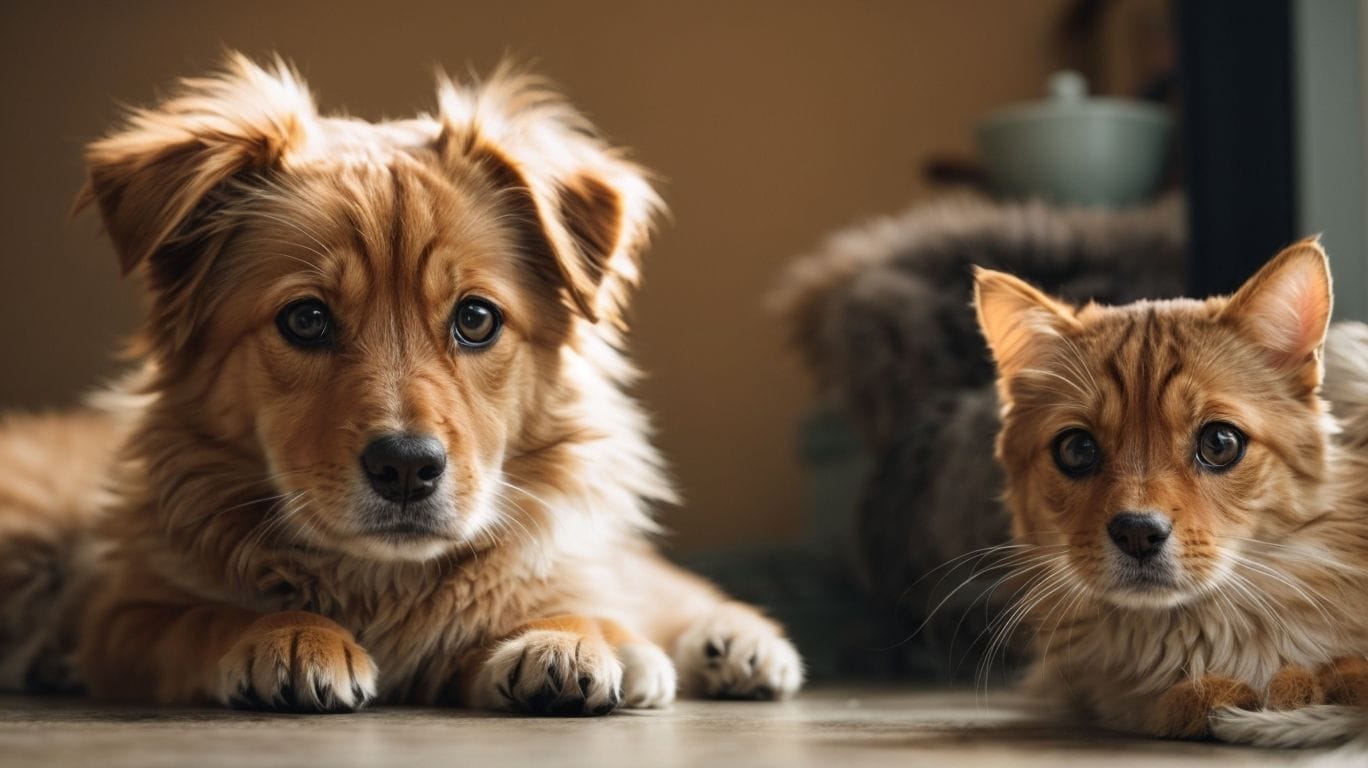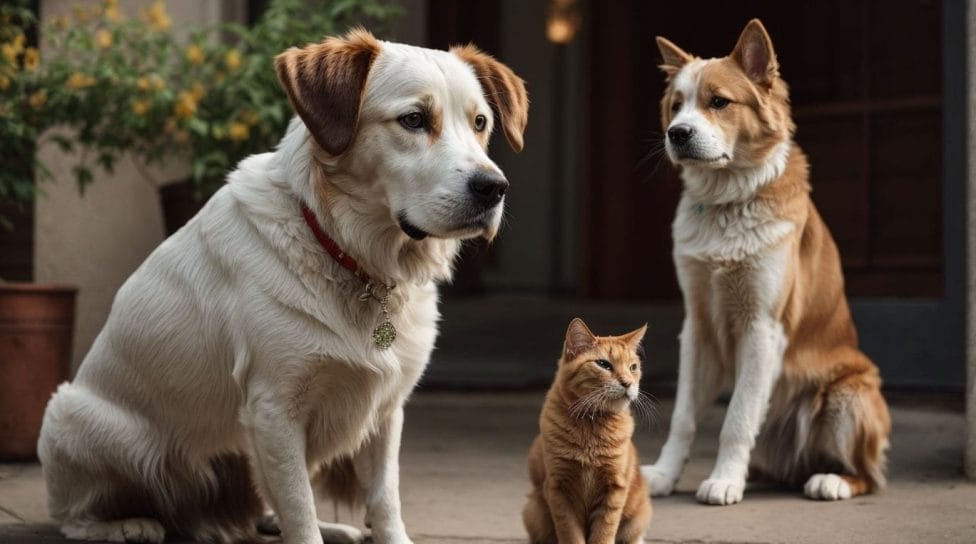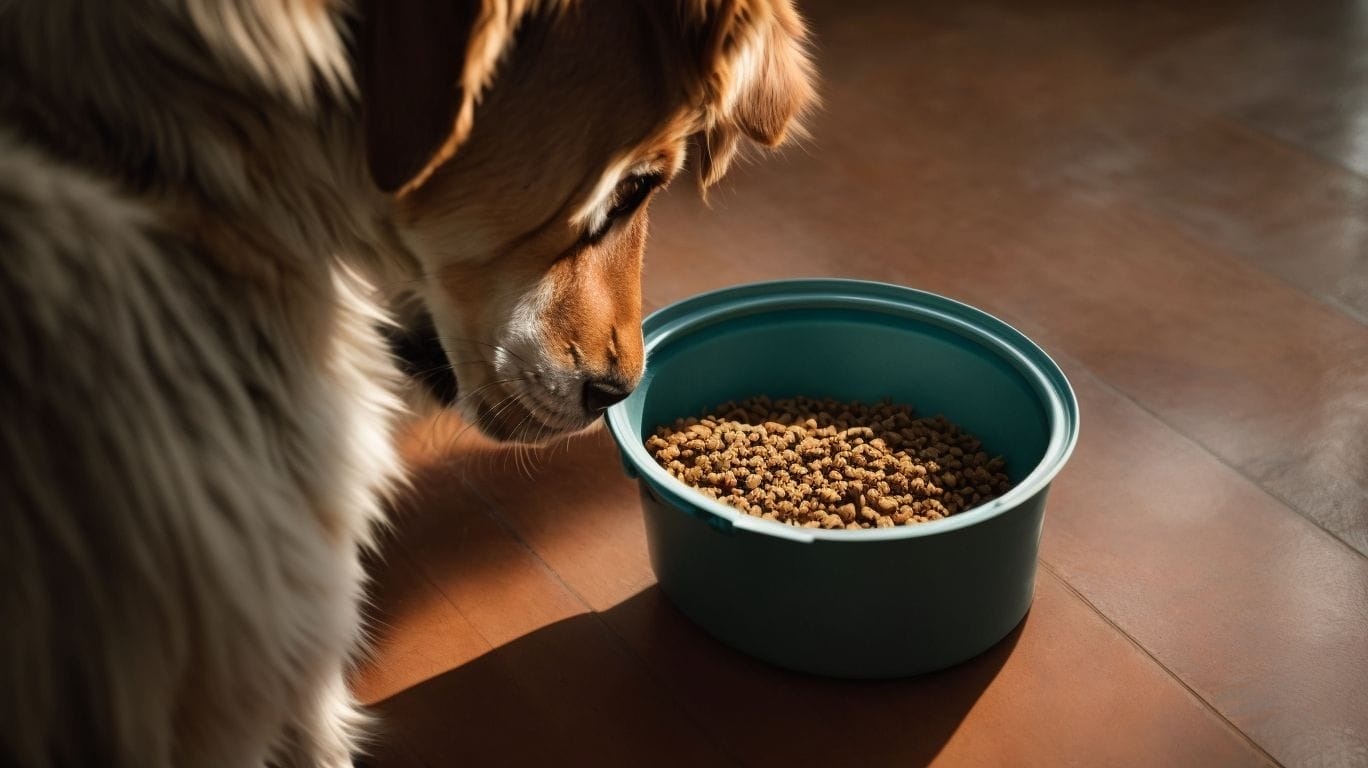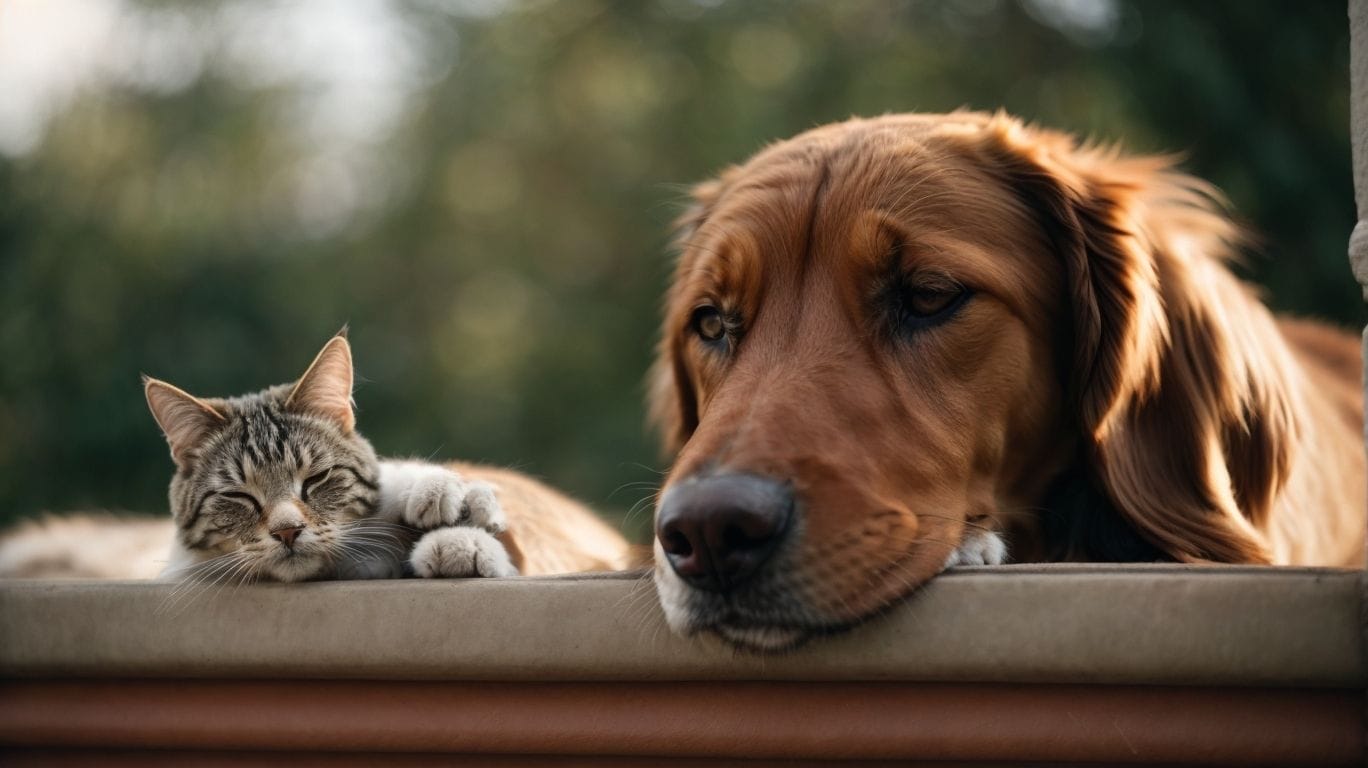Dogs and cats are often portrayed as natural enemies, leading some to wonder whether dogs actually eat cats. While it may seem like a shocking and disturbing concept, there are certain factors to consider when exploring this topic. In this article, we will delve into the question of whether dogs can eat cats and discuss the underlying reasons behind such behavior. We will also explore the risks and consequences involved, as well as provide practical measures to prevent dogs from harming cats. Understanding the dynamics between dogs and cats is essential for pet owners to ensure the safety and well-being of all pets in the household. Let’s explore this topic further.
Key takeaway:
- Can Dogs Eat Cats? While it is not common for dogs to eat cats, certain factors like instincts, lack of socialization, and prey drive can contribute to this behavior.
- Risks and Consequences: Eating cats can lead to injury or death of the cat, aggression, and behavioral issues in dogs. Additionally, there may be legal consequences for such actions.
- Prevention: Proper socialization and training, adequate supervision and separation, and providing sufficient nutritional needs can help prevent dogs from eating cats and mitigate the associated risks and consequences.
Can Dogs Eat Cats?

Photo Credits: Petnarnia.Com by Justin Robinson
Curious if dogs have a taste for feline cuisine? Let’s dive into the fascinating world of whether dogs can eat cats. In this section, we’ll explore two captivating sub-topics: instincts and prey drive, as well as behavior and training. Prepare for a paw-some exploration of this intriguing subject that will have you wagging your tail in anticipation!
Natural Instincts and Prey Drive
Dogs have natural instincts and prey drive, which can sometimes lead them to chase and potentially harm cats. The presence of these natural instincts and prey drive in dogs is a result of their genetic makeup and is influenced by their ancestors’ hunting instincts. While certain dogs may display a stronger inclination towards this behavior, it is important to acknowledge that not all dogs will exhibit it. Implementing proper training and socialization techniques can effectively manage a dog’s prey drive and prevent them from pursuing or causing harm to cats. Gaining an understanding of a dog’s natural instincts and prey drive is vital in establishing a safe environment where dogs and cats can peacefully coexist.
Behavior and Training
Behavior and training play a crucial role in addressing the issue of dogs eating cats. Here are steps to consider:
- Identify the underlying cause: Determine the reason behind the behavior, such as fear, prey drive, or lack of socialization.
- Consult with a professional: Seek help from a certified dog trainer or behaviorist specializing in dog-cat interactions.
- Behavior modification techniques: Utilize positive reinforcement training methods to redirect and discourage the behavior.
- Socialization and desensitization: Gradually introduce the dog to cats in a controlled environment to foster positive associations.
- Supervision and separation: Monitor interactions between the dog and cat, and separate them when necessary to prevent any potential harm.
Why Do Some Dogs Eat Cats?

Photo Credits: Petnarnia.Com by Bruce Anderson
Have you ever wondered why some dogs have a bizarre tendency to eat cats? Uncovering the reasons behind this peculiar behavior, we’ll dive into three possible explanations. We’ll explore how lack of proper socialization, hunger or malnutrition, and their innate prey drive and hunting instinct can contribute to this phenomenon. Get ready to unravel the mysteries behind why our furry friends might engage in such unexpected behavior.
Lack of Proper Socialization
Lack of proper socialization can play a significant role in dogs eating cats. When dogs are not adequately exposed to cats or other animals during their developmental years, they may view them as prey rather than companions. This absence of socialization can result in aggressive behavior towards cats and an increased drive to hunt them. To mitigate this, it is vital to introduce dogs to cats in a controlled setting from an early age, allowing them to become familiar and comfortable with their presence. Implementing proper socialization and training is essential to ensure that dogs comprehend appropriate behavior around cats and minimize the potential for harm.
Hunger or Malnutrition
Hunger and malnutrition can be factors that lead some dogs to eat cats. When canines do not receive adequate nourishment or a well-balanced diet, they may resort to hunting and consuming small animals such as felines. Pet owners must ensure that their dogs are properly nourished and receive all the essential nutrients to prevent such behavior.
A genuine account underscoring the repercussions of hunger and malnutrition in dogs centers on a stray dog named Max. Max, who consistently scavenged for sustenance, ended up assaulting a neighborhood cat out of sheer desperation. This incident emphasized the significance of addressing the issue of hunger and malnutrition in stray dogs to avert harm to other animals.
Prey Drive and Hunting Instinct
A dog’s prey drive and hunting instinct are natural behaviors that can compel them to chase and potentially harm smaller animals like cats. Pet owners must understand this instinct in order to prevent unwanted incidents.
- Recognize the signs: Dogs with a strong prey drive may display behaviors such as stalking, chasing, and pouncing.
- Socialization and training: Proper socialization from an early age can assist dogs in learning to interact appropriately with cats and other animals. Training should incorporate commands like “leave it” or “stay” when encountering cats.
- Supervision and separation: When introducing a dog and a cat, it is important always to supervise their interactions. Keep them separated when unsupervised to avoid any accidents.
By being mindful of a dog’s prey drive and taking preventative measures, pet owners can ensure the safety and well-being of both their dog and their cat.
What Are the Risks and Consequences?

Photo Credits: Petnarnia.Com by Joshua Robinson
When it comes to the question of whether dogs eat cats, the risks and consequences that arise are worth exploring. From the potential injury or death of the cat to the emergence of aggression and behavioral issues, this section uncovers the potential threats. We will shed light on the legal consequences that might come into play. Brace yourself as we dive into the unsettling reality surrounding this topic without holding anything back.
Injury or Death of the Cat
The risk of injury or death of a cat is a serious concern if dogs are allowed to chase or attack them. Dogs have the instinct to hunt and capture smaller animals, and cats can be seen as prey due to their size and movement. In such situations, cats may suffer injuries ranging from scratches and bites to more serious harm. There have been instances where dogs have killed cats, causing irreparable loss for their owners. It is important to keep dogs and cats separated, particularly if there is a history of aggression or prey drive, to prevent such tragic outcomes.
True history: In a heartbreaking incident, a family’s beloved cat was fatally injured by a neighbor’s dog, resulting in the injury or death of the cat. Despite efforts to separate them, the dog’s prey drive took over, causing this tragic outcome. This incident emphasizes the need for responsible pet ownership and ensuring the safety of all animals involved.
Aggression and Behavioral Issues
Aggression and behavioral issues can arise when dogs exhibit predatory behavior towards cats. It is essential to address these aggression and behavioral issues to ensure the safety of both pets and prevent any harm.
- Training: Seek professional help to modify aggressive behavior and train the dog to coexist peacefully with cats.
- Behavior Modification: Implement strategies like positive reinforcement to redirect the dog’s focus and discourage aggressive tendencies.
- Socialization: Gradually introduce the dog to cats in controlled environments to foster positive associations and reduce aggressive reactions.
- Supervision: Always supervise interactions between dogs and cats to intervene if any signs of aggression or discomfort are observed.
Legal Consequences
Legal consequences should always be taken into account when considering the behavior of dogs eating cats. In numerous jurisdictions, the act of dogs consuming cats is deemed illegal and can lead to legal consequences for the owner of the dog. The penalties for such actions may vary from fines to imprisonment, depending on the gravity of the incident. It is of utmost importance for dog owners to comprehend their legal obligations and to ensure that their dogs undergo appropriate training and supervision to prevent such occurrences. It is crucial for dog owners to acquaint themselves with any specific laws or regulations concerning pet ownership in their locality and to be aware of the consequences of dog-on-cat attacks.
How to Prevent Dogs from Eating Cats

Photo Credits: Petnarnia.Com by William Martinez
Preventing dogs from eating cats is vital for maintaining a harmonious household. In this section, we will explore effective strategies to ensure the safety and well-being of both your furry companions. From proper socialization and training techniques to the importance of supervision and separation, we’ll discuss various approaches that can help mitigate any potential conflicts. We’ll emphasize the significance of providing sufficient nutritional needs for your dogs to minimize their prey drive. Let’s dive into these essential considerations for a peaceful coexistence between dogs and cats.
Proper Socialization and Training
Proper socialization and training are essential to prevent dogs from eating cats.
- Start early: Begin socializing your dog with cats from a young age to establish positive associations.
- Positive reinforcement: Reward your dog for calm and appropriate behavior around cats.
- Gradual introductions: Slowly introduce your dog to cats in controlled environments to minimize stress and aggression.
- Monitor closely: Supervise interactions between your dog and cats to ensure everyone’s safety.
- Separation when necessary: Separate your dog and cats when you’re unable to supervise or if there are signs of tension or aggression.
Supervision and Separation
Supervision and separation are crucial in preventing dogs from eating cats. By ensuring proper supervision and separation, the safety of the cat can be maintained. This can be achieved through the use of baby gates or the creation of designated spaces for each pet. When the dog and cat are together, it is important to supervise their interactions to prevent any potential aggression closely. Providing separate rooms or crates for each pet can also promote a peaceful coexistence. With the implementation of effective supervision and separation, owners can create a harmonious environment for their dogs and cats.
In an inspiring story of supervision and separation, a rescued dog and a stray cat were introduced slowly and with careful observation. Through continuous supervision and separation, they formed a strong bond and became inseparable companions. The owners ensured their safety by utilizing baby gates and separate feeding areas. This heartwarming tale highlights the significance of supervision and separation in fostering a loving and peaceful relationship between dogs and cats.
Providing Sufficient Nutritional Needs
When it comes to providing sufficient nutritional needs for dogs, it is essential to focus on their specific dietary requirements. Dogs are omnivores and need a balanced diet that includes protein, carbohydrates, fats, vitamins, and minerals. Commercial dog food usually contains all the necessary nutrients, but it’s important to choose high-quality brands that meet their nutritional needs. Consulting with a veterinarian can help determine the appropriate portion sizes and recommend any necessary dietary supplements. Providing sufficient nutritional needs is crucial in ensuring a dog’s overall health, including their growth, development, and immune system functioning.
Some Facts About Do Dogs Eat Cats?:
- ✅ Dogs and cats are instinctive enemies, but they can become friends if raised together. (Source: Our Team)
- ✅ Dogs will kill cats, but it is rare for them to eat them. (Source: Our Team)
- ✅ The hunting instinct is still present in dogs, even in toy breeds. (Source: Our Team)
- ✅ Dogs may misinterpret a cat’s tail wagging as aggression, leading to aggressive behavior. (Source: Our Team)
- ✅ The individual personalities of cats and dogs play a role in their interactions. (Source: Our Team)


